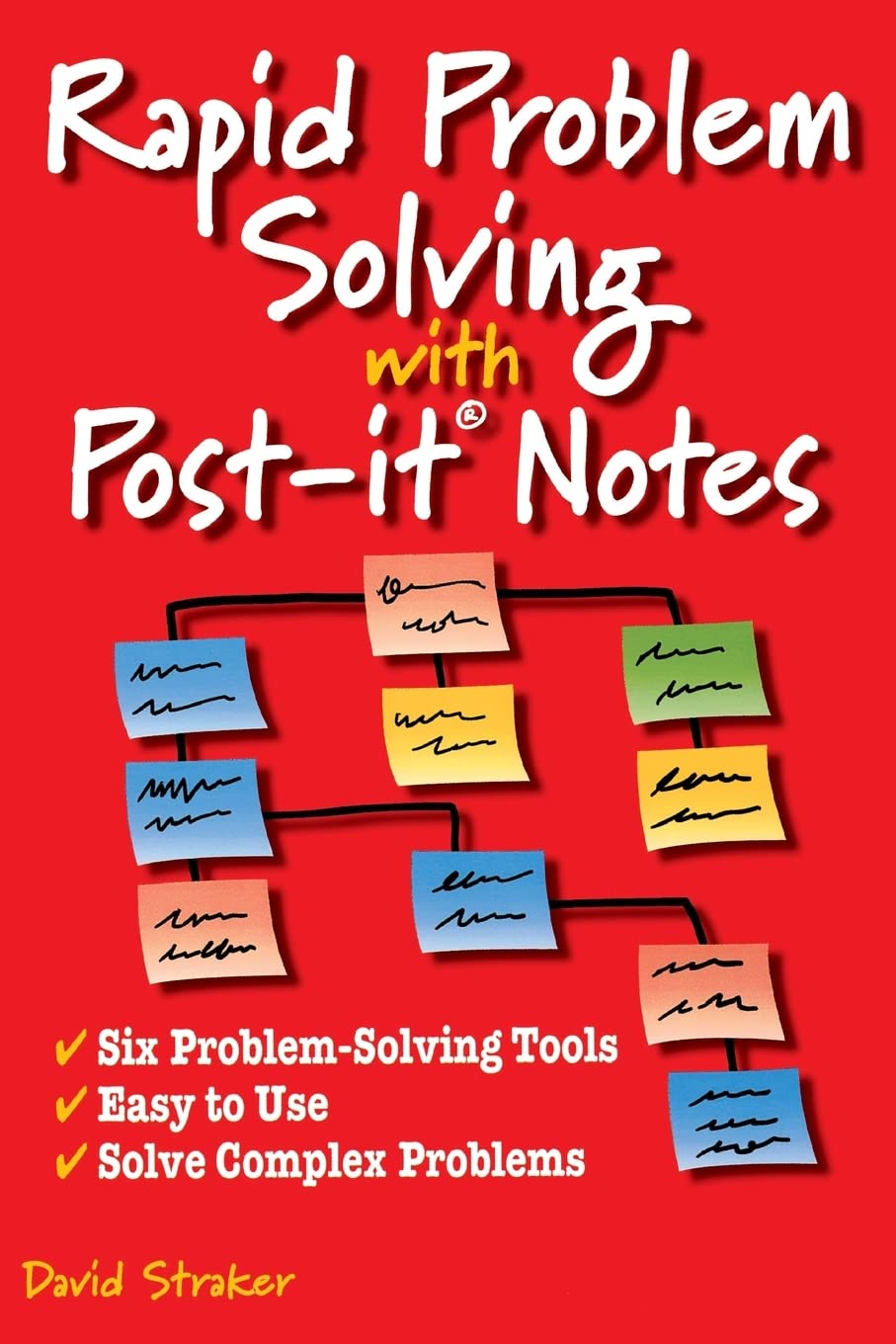

Full description not available
R**T
Most useful business book I own
I routinely buy business books only to donate them to charity or libraries without ever reading them. Business books are boring, trite, overhyped, and worse than useless. Generally speaking, of course - I mean, there are two or three business books worth reading, so I can't diss them all.This book is in the worthwhile category. It sits on my shelf, battle-worn, waiting for duty like a special operations soldier with a reputation for breaking all the rules and beating all enemies. Yeah, it's the Rambo of business books.The reason is pretty simple, you HAVE to use it. It does no good to read it - in fact I don't think I've ever read the whole thing. I pick it up, find a tool that looks like a good way to tackle a problem, and get to work. Sometimes I use sticky notes, and sometimes I don't. It's easier for me not to use them, because the business of problem solving and process understanding can break out at any time and require immediate action with whatever I have - dry erase board, napkin, notepad, or otherwise. Repeated use of this book has taught me to think systemically and ask the right questions, so the tool used is not important.As a result, I solve a lot of problems, explain a lot of complicated things, and find the things we need to focus on in order to maximize the impact of our efforts.Clearly it isn't going to work if you have no imagination. Creativity, free thinking, and general disregard for what others think of your methods is essential. This book shows very simple systemic methods of thought, and it is your job to fill in the blanks.And no business book would be worthwhile if you didn't get dirty in the process of using it. So buy it and use it already!
M**Z
Simple, common powerful techniques... organized.
Don't get fooled by the title, this is about using Post-It notes but the core of the book can be used easily without them. This book is about simple problem-solving tools that most people have already used, but presented in an organized way. These tools are not only for analysts or managers or X; they are for everyone who needs to solve problems like "what gift will I give to my friend?", "What are the core priorities of this project?", "How should I classify our product categories?", "what are the relationships among out departments?", etc. Please note that Post-It notes are used as enhancers of those simple problem-solving techniques, and they are used in very powerful ways. I didn't have ever considered the Post-It notes as serious material for my job; I thought they were only good for to-do listings.The book is very easy to read; also, it can be read as a reference book (to remind you how or when to use any of the techniques) or as a step-by-step tutorial.This is not a book with obscure quasi-magical problem-solving techniques only known by rocket science consultants... this is a book about very basic tools that will help you to solve most problems you will find everyday at work, at home, at wherever.Highly recommended for young people too.
A**N
Good book !!
Good book !!
A**R
Book Review: Rapid Problem Solving with Post-It Notes by David Straker
Rapid Problem Solving with Post-It Notes by David Straker is one of the those books that had been on my wishlist for quite a while.The book is quite handy, very concise and so easy to understand.The author presents six simple ways to approach problem solving using Post-it® Note. What I like about the book most is that it is very clear on what the tools are, how they are used and when to use them. The examples used are also very clear and appropriate.As someone who leads innovation teams, product improvement teams, product development and cost engineering teams, these tools are very helpful.Highly recommended for those who work in teams.
P**R
A quick way to organise your ever flowing thoughts.
This is a great book to manage and organise big or little thoughts of yours onto Post-It notes. Then attempts to show you how to put this in some sense of order that helps you to get the job done. Wheither "that" is for study of a project or what is the next step in perhaps for the next family picnic that's coming up very soon.Basically the book is divided into 3 parts. The first one talks about what is problem solving or how it works if you are not sure or familiar with this. Second part shows you the 4 basic styles offered using simple questions of why and how and when to use them and the very last section provides a good fictional example that helps the reader grasp or put "this" all that makes sense in action.I like the examples provided at the end to resolve a frustrating or teething issues or problems that can be related to things I have found in my workplace.
J**R
Simple and effective; even teaches you how to properly peel a note...
We recently had a two-day company retreat where we used several of this book's techniques. While I believe in mindmaps, this appeared quite simplistic to me, but after two days we came up with all the corporate rocks we needed: mission statement, company values, motto, project design, strategic planning. We used the Post-it Tabletop Easel Pad for the "Help" idea board and the wall of the room for the notes. Then I came home and found this book on the shelf where I put it a long time ago. So I would recommend to read it cover to cover, then remember how effective it could be for a wide variety of problem-solving. Keep it well visible on the shelf.
Trustpilot
1 month ago
2 weeks ago